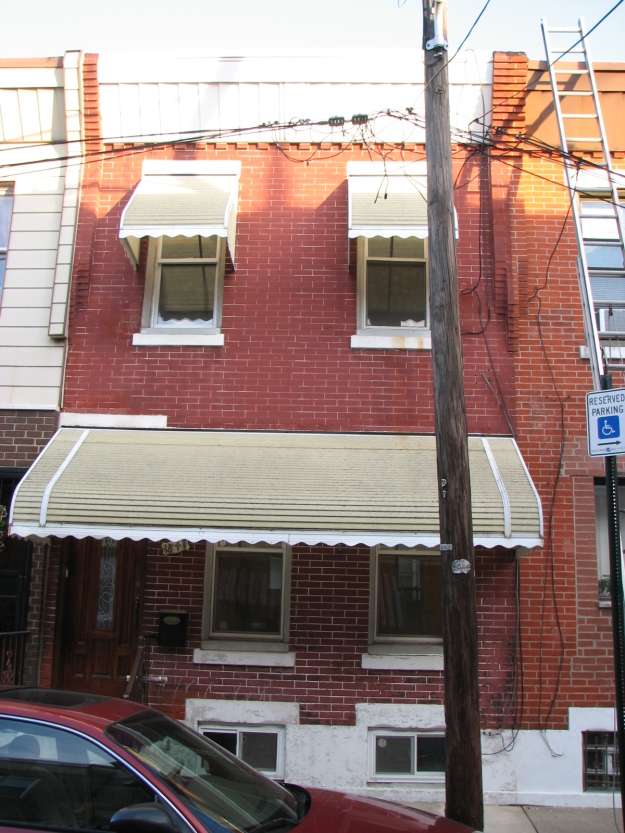Where would we start? I grew up fearless about fixing up run-down houses and snobby about old ones. My parents talked my grandmother into buying a fixer upper when she was 88. Why waste money on someone else’s taste? If we do it ourselves we’ll get exactly what we want, done better, for less money. That’s what my parents always say. So I did them one better and bought a spectacularly run-down late Victorian working class spec house. The age of innocence was 24.
I started this blog pretty much as soon as I bought my house, mostly to make sure that I remember to take before/after photos. Much more than I expected, I’m writing a tale of discovery. As in, discovering just how much work I had to do to the place. So follow along the story of my house’s improvement, my personal growth, and my savings’ shrinkage. Maybe my story can be inspiration for you. Maybe it’s a cautionary tale. If not, hopefully it’s at least entertaining. But no matter how much or how little you can relate, please please share your advice. I want to get this place right the first time, if I can.
When I started looking at houses, I was disappointed to find that most of the ones that were in good condition were also very bland. It’s more profitable for a developer to rip out handcrafted doors and woodwork and replace it all with crisp, clean, hollow fiberboard. Because these had no appeal to me, I set out looking for a house whose original charm was mostly intact, but that didn’t need too much updating for safety. The one I found fit the bill: the second floor had most of the original door trim, which gave it a vaguely Victorian feel. Downstairs, an early Twentieth Century renovation gave it an open living/dining room and a Craftsman/Deco/Colonial Revival vibe. I love both looks, and the odd mismatch between them. I expected that I’d correct a few plumbing issues, line the chimney, clean up the old peeling wallpaper, sand the floors, and move in. The house had other plans, and I’ve nearly gutted it. But when I’m done it will have more “original” than when I started! Not that I’m turning it into a museum; a handful of modern touches will compound the house’s jumble of different periods. Let’s hope it works.
Houses like this one abound in Philadelphia. They were built by the thousand to satisfy the city’s massive industrial growth. Modest houses like these, I think, have an important place in the history of human progress, and I’m excited to preserve a piece of it. This quote from The City of Philadelphia As It Appears in the Year 1894 sums it up best:
“The two-story dwellings of this city are, beyond all question, the best, as a system, not only owing to the single family ideas they represent, but because their cost is within the reach of all who desire to own their own homes. They have done more to elevate and to make a better home life than any other known influence. They typify a higher civilization, as well as a truer idea of American home life, and are better, purer, sweeter than any tenement house systems that ever existed. They are what make Philadelphia a city of homes, and command the attention of visitors from every quarter of the globe.”
I’d love to hear from you! Feel free to leave a comment anywhere on the blog. You can also get in touch with the form below.
